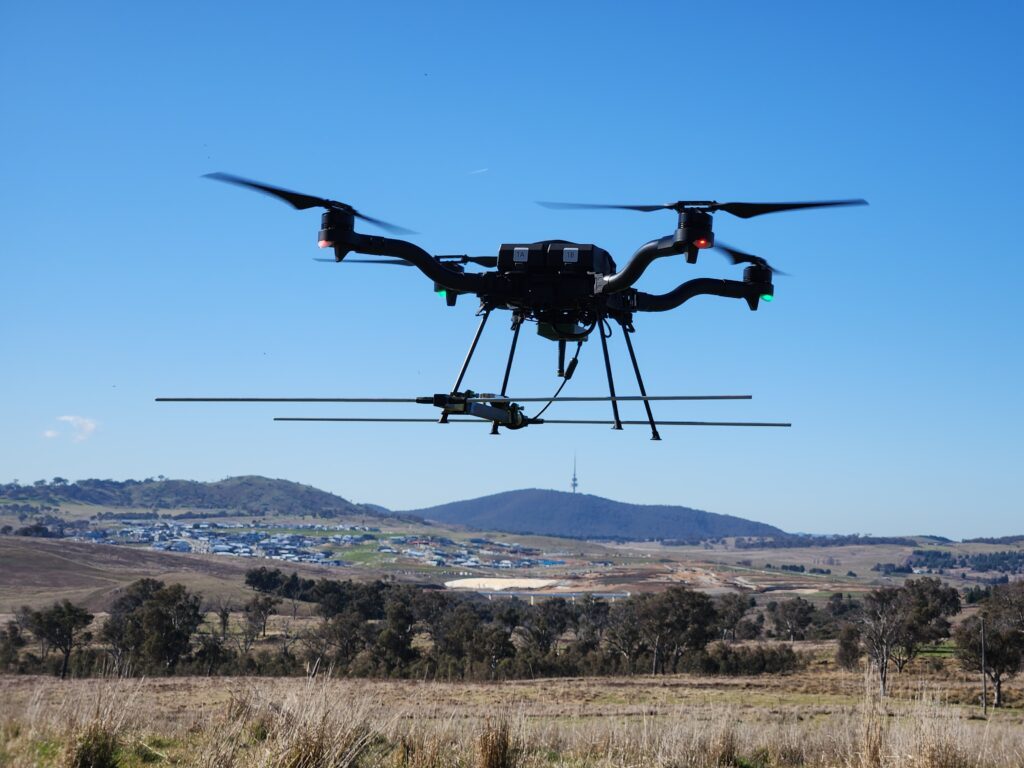
For much of her career, Dr. Debbie Saunders has dedicated herself to the conservation of endangered species, focusing particularly on their habitats to ensure their survival. Her journey took an innovative turn when she confronted the challenge of tracking small migratory birds, which had consistently eluded researchers despite the use of tiny radio tags. Traditional hand-held receivers were inadequate for tracking these birds once they were released into the wild, as their signals were nearly impossible to pick up over long distances and varied terrains.
The Genesis of Wildlife Drones
Faced with these limitations, Saunders explored the potential of unmanned aerial vehicles (UAVs) to enhance the tracking of tagged animals. This idea, which seemed far-fetched at first, was the foundation for a groundbreaking research project. Saunders and her team embarked on developing a drone-based tracking system, despite the early UAV technology being rudimentary. These initial drones were small, had limited payload capacity, and could only fly for short durations, posing significant constraints on the project.
However, persistence paid off. Saunders’ research demonstrated the feasibility of using drones for wildlife tracking, leading to the launch of Wildlife Drones in 2016. This Canberra-based start-up has since expanded its customer base across Australia, the United States, and other countries, offering innovative solutions for wildlife monitoring.
From Concept to Market
Transitioning from concept to a market-ready product involved extensive collaboration with radio frequency engineers, software developers, and industrial designers. The result was a sophisticated drone-based telemetry system capable of tracking up to 40 animals simultaneously. This system includes a radio receiver payload that can be attached to commercial drones and a laptop base station for data collection and analysis.
Wildlife drone technology has found diverse applications beyond its original purpose. Farmers and ranchers use it to monitor livestock, while conservationists track invasive species to mitigate their impact on local ecosystems. For example, feral pigs and Burmese pythons, which cause significant damage to agriculture and native wildlife, can be tracked and managed more effectively using this technology.
Tackling Invasive Species
One of the notable applications of Wildlife Drones’ technology is in combating invasive hornets entering the northern United States from Canada. These insects are captured using baited traps and fitted with tiny radio tags. Once released, their movements are tracked back to their nests, which can then be eradicated to prevent further infestation. This method demonstrates the versatility and effectiveness of drone-based tracking in addressing ecological challenges.
Advantages of Drone Technology
Drones offer unparalleled advantages in tracking highly mobile animals across diverse terrains. Unlike traditional tracking methods, drones can navigate over obstacles such as fences, roads, and mountains, providing a bird’s-eye view and collecting data over long distances without being obstructed by trees, buildings, or other barriers. This capability is particularly valuable for monitoring fast-moving or elusive species.
In addition to radio telemetry, Wildlife Drones has integrated thermal imaging into its services. This technology allows researchers to locate untagged animals in the wild by detecting their heat signatures. Combining thermal imaging with radio telemetry provides a comprehensive approach: animals can first be located using thermal cameras, then captured and tagged for ongoing tracking with the radio telemetry system.
Technical Challenges and Solutions
Despite the success of their technology, Wildlife Drones faced technical challenges, particularly regarding electromagnetic interference from drones themselves. Many commercial drones, such as those from DJI, generate significant electronic noise in the VHF band, making it difficult to pick up signals from low-powered tags. To overcome this, Wildlife Drones collaborated with manufacturers like Freefly Systems to develop quieter UAVs, such as the Astro, which minimize interference and enhance tracking accuracy.
Freefly Systems Astro, developed in Washington State, became the preferred platform for Wildlife Drones. This collaboration highlights the importance of integrating specialized equipment to achieve optimal performance. The Astro drone’s compatibility and reduced electronic noise make it an ideal choice for wildlife tracking applications, especially for clients restricted from using Chinese-made drones due to regulatory or security concerns.
Continuous Innovation and Future Prospects
Wildlife Drones remains committed to advancing its technology. Their latest innovation, the Dragonfly payload unit, is a testament to this commitment. This new payload is smaller, lighter, and more robust than previous versions, enhancing the system’s portability and ease of use. The Dragonfly payload can be quickly attached to a drone’s gimbal and is ready to use almost immediately, streamlining the tracking process.
Looking ahead, Saunders envisions expanding the application of Wildlife Drones’ technology to larger aerial vehicles, such as next-generation vertical take-off and landing (VTOL) aircraft. These platforms promise extended range and data collection capabilities, which could revolutionize wildlife tracking and conservation efforts. However, the implementation of such technologies depends on regulatory developments that permit long-range or beyond visual line-of-sight (BVLOS) flights.
Conclusion
The advent of drone technology has significantly transformed wildlife conservation, providing innovative solutions for tracking and studying elusive species. Wildlife Drones, under the leadership of Dr. Debbie Saunders, exemplifies how technological ingenuity can address longstanding challenges in wildlife research and management. As drone technology continues to evolve, its applications in conservation are likely to expand, offering new insights and tools to protect our planet’s biodiversity.
Leave a Reply